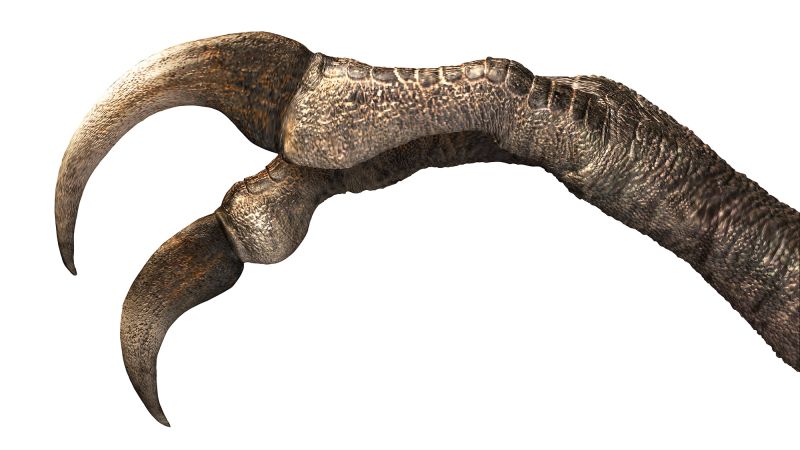Recently, paleontologists made a remarkable discovery of a previously unknown dinosaur species in Mongolia’s arid Gobi Desert. Dubbed **Duonychus tsogtbaatari**, the species is characterized by its striking physical traits, particularly its distinctive two-fingered claws. The fossilized remains exhibit a bizarre amalgamation of features reminiscent of various creatures, drawing comparisons to sloths, giraffes, and even the fictional character Edward Scissorhands, known for his unique scissor-like hands.
The find is notable not only for the rarity of its specimen but also for the preservation of the keratin sheath on one of its claws. Unlike many fossilized remains, which often lose critical soft tissue features over millions of years, the keratin sheath—a material similar to human fingernails—remains largely intact. This significant preservation allows scientists to infer that the claw itself was much longer than the underlying bone structure, measuring closely to twelve inches. Darla Zelenitsky, a paleontologist at the University of Calgary and co-author of a new study published in *iScience*, stated, “It’s close to a foot in size. This is by far the biggest claw preserved for a dinosaur that has that keratinous sheath on it.”
The dinosaur’s scientific name honored Khishigjav Tsogtbaatar, a prominent Mongolian paleontologist, reflecting both respect for his contributions and a commitment to acknowledging local heritage in paleontological discoveries. The genus name _Duonychus_, which translates to “two claws” in Greek, describes its two-fingered appendages. Unlike the apex predators within the theropod family—such as the iconic Tyrannosaurus rex—_Duonychus_ is classified among therizinosaurs, a group that predominantly fed on plants and is not characterized by predatory instincts.
Estimates suggest that _Duonychus tsogtbaatari_ would have stood approximately ten feet tall and weighed around 573 pounds (260 kilograms). Its curved claws, potentially designed for grasping foliage, would have provided the dinosaur with the ability to reach for plant material, including branches up to four inches in diameter. Alongside its claws, the paleontologists also uncovered parts of its backbone, tail, hips, arms, and legs, indicating the well-preserved nature of the fossil.
Paleontologist Zelenitsky noted that beyond simple foraging, the claws may have served additional purposes such as display behavior or self-defense. “They weren’t predators, but they could defend themselves with those claws. They were big and very sharp,” she observed. This functionality suggests that the claws were multifunctional, serving not just in feeding but also in possible social signaling or deterring threats.
The discovery was labeled an “exciting” find by David Hone, a paleontologist from Queen Mary University of London. He expressed surprise at the fossilized claw’s preservation, emphasizing its significance in understanding the relationship between keratin structures and bone in dinosaurs. Hone remarked that this contribution enhances our comprehension of therizinosaurs—such unique creatures have provided a wealth of research opportunities, contributing to the narrative of how certain dinosaurs may have interacted with their environment.
Steve Brusatte, a professor of paleontology at the University of Edinburgh, elaborated further on the intriguing morphology of the dinosaur. He drew parallels between _Duonychus_ and the character Edward Scissorhands, suggesting that its two-clawed appearance resembled oversized barbeque tongs. Brusatte highlighted that such anatomical features are rare among dinosaurs, with only a few known lineages, including _T. rex_, showing similar digit structures. However, he remarked that while _T. rex_ had limited utility in its small arms, _Duonychus_ had a functional role in utilizing its claws for feeding strategies.
Finally, Zelenitsky suggested that this dinosaur likely had feathers, similar to its therizinosaurs relatives, which adds to the uniquely peculiar aesthetic of _Duonychus_tsogtbaatari_. The fossil not only marks a new chapter in the understanding of dinosaur diversity but also provides a tangible glimpse into the complexities of prehistoric ecosystems. As Brusatte aptly put it, “This is yet another example of a wonderful new dinosaur that we couldn’t have dreamed ever existed if we didn’t find its fossils.” This statement resonates with the ongoing allure and fascination surrounding paleontological discoveries, promising further revelations about the majestic beings that once roamed our planet.












